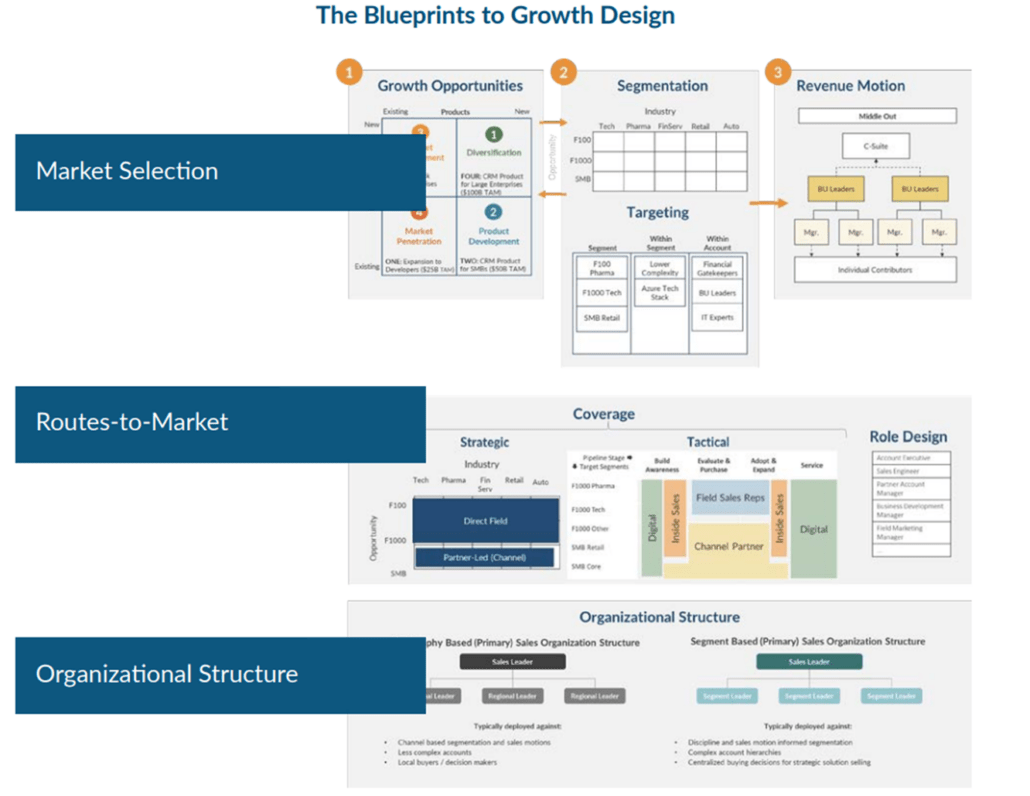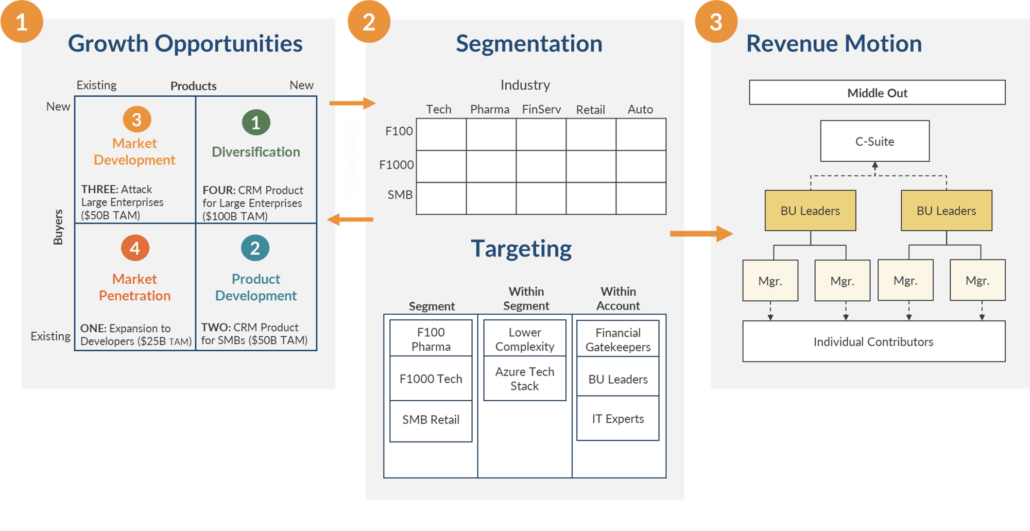Redefining Your B2B Go-to-Market Strategy: A Blueprint for Growth
In the shifting sands of the digital era, business-to-business (B2B) sales and marketing motions have transformed drastically. Where traditional face-to-face sales pitches once dominated, technology and evolving buyer preferences have since reshaped the playing field. As a result, the rise of subscription-based models, an emphasis on customer experience, and the dominance of digital channels have all made their way into B2B go-to-market strategy(ies).
Define and Optimize Your B2B Go-to-Market Strategy
Leaders who can establish consistent and dependable revenue streams, and embrace technological disruptions and new business models, all while counteracting seasonal variations, macroeconomic influences, and competitor moves will prevail. Sounds simple right? Not so much. Such resilient revenue channels don’t arise by chance; they’re meticulously crafted. This focused approach is known as a go-to-market (GTM) strategy.
Go-to-Market (GTM) Strategy: A plan that outlines how a company will sell its products or services to customers. It encompasses everything from identifying and segmenting the target market, positioning the product or service in that market, to choosing the appropriate sales channels and setting the right price. The GTM strategy ensures that all parts of an organization are aligned and work cohesively to bring a product or service to market successfully.
Design for Sustainable Growth
Developing a robust B2B go-to-market strategy in an ever-evolving landscape may seem daunting, but the fundamental principles remain the same. The first step starts with building a blueprint to find and maintain predictable growth. In helping enterprises with complex purchase cycles, designing, diagnosing, and retooling their go-to-market strategies, the path to growth is not shrouded in mystery. Driving growth is akin to operating a factory. You begin with a blueprint, gather the raw materials, assemble, and add value to those materials in assembly lines, and finally ship the product out the door. MarketBridge’s tried and true blueprint for growth (see part 1 of our 3-part whitepaper series) comprises Market Selection, Routes-to-Market, and Organizational Structure.
1) Market Selection
It is always tempting to look inward when thinking about strategy. Starting with organizational problems, technology integrations, or new data sources can be more comfortable for executives because these issues are well-known for being easily accessible. However, growth starts outside the walls of the enterprise, and that’s where the go-to-market strategy should start. After all, the market is literally in the title of the discipline.
Three elements make up Market Selection:
- Growth Opportunities: the chunky, big areas of growth that the enterprise should bet on over the next few years to grow revenue
- Segmentation and Targeting: understanding the universe of accounts and the roles inside of them, and deliberately choosing targets within them (and ignoring others)
- Revenue Motions: The strategy inside of an account to actually land the revenue, matching buyers with value.
2) Routes-to-Market
While the Market Selection process looks at the world from the perspective of the customer, the Route-to-Market planning process is concerned with the company getting to the customer. Route-to-Market planning includes marketing and sales coverage and channel economics; addressing channel conflict; and role design in the internal sales force. It is very much a mechanical and economic exercise, whereas market selection is an empathetic and creative exercise.
Note: Market Selection and Route-to-Market Planning are intimately linked and thus must be designed concurrently and iteratively. It would be a mistake to run each process in sequence, only thinking about coverage and role design once market selection and revenue motions have been finalized. Instead, two teams should work in concert, communicating regularly, and ending up with an integrated Market Selection and Route-to-Market strategy that works together.
3) Organizational Structure
Strategies need structures to operate. The structure of a B2B go-to-market strategy is hugely predictive of its success. Organizations with many siloed teams—particularly sales and marketing—tend to operate in those silos, regardless of the stated strategy. Geographically separated organizations tend to be geography-centric—even if sales territories are realigned toward industries
Organizational Structure can be broken down into two parts. First, the overall design of the organization is concerned with the roles, reporting structures, relationships, and specializations that will execute the go-to-market strategy. Second, capacity planning determines the right number of people that will be required to execute revenue motions in quota-bearing roles.
1st Step Toward a Modern B2B Go-to-Market Strategy
While developing a resilient go-to-market strategy is crucial, the reality is that it is only one piece of the puzzle. To truly future-proof your business and set the stage for sustainable growth, a comprehensive approach is necessary. And this blog covers just one piece of the puzzle. Whereas, there are Operational and Analytical frameworks vital for market entry, and ultimately Execution and Engagement activities to drive revenue success.
For a more comprehensive look at the blueprint above, we invite you to download our whitepaper, “Part 1: Growth Design – A Roadmap for Modern B2B Go-to-Market.” We delve deeper into the graphics above and all of the components needed for growth. Learn how to effectively select your markets, choose your routes-to-market, and design an organizational structure that best supports your strategic objectives.
The B2B marketing landscape may be ever-changing, but with the right guidance, your business can not only adapt but thrive.
A Roadmap for Modern B2B Go-to-Market—Part 1: Growth Design
Learn what it takes to find and maintain predictable revenue growth in our essential 49-page guide.









